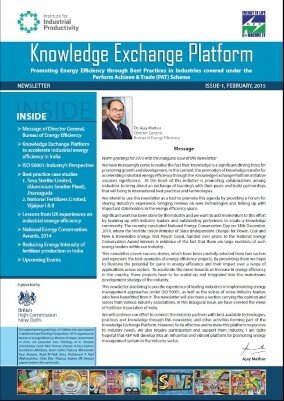OUR WORK IN SOUTH ASIA

The project on “Promoting resource efficiency along the value chains of key sectors in South Asia” under the Knowledge Partnership Program is a joint initiative of Institute for Industrial Productivity India and Department for International Development.
This project aims at capitalizing on this potential by promoting Indian best practices/ technologies/ policies in key sectors in the focus countries (Bangladesh and Nepal) of South Asia. The project also facilitated multi-stakeholder dialogue (policy makers, industry associations, major brands, SMEs, financial institutions etc.) to facilitate cross-sectoral coordination, policy reforms and better access to financing options. The project will cover the tea & sugar sectors in Nepal and textile & Brick sectors in Bangladesh
A detailed sector assessment was undertaken as part of the project through secondary research that confirmed that resource intensity in the targeted sectors can be reduced to a large extent through widespread adoption of proven and commercially available technologies, best practices and policies that has been successfully tried out in India. There is also a demand for learnings from Indian best practices and technologies. In order to realize this potential, the project strategies have been designed to address the specific needs of the stakeholders through knowledge sharing, exposure visits and experience sharing with Indian stakeholders to understand the impact of policy reforms, technology intervention and the manner in which the barriers to implementation of resource conservation measures were addressed etc.
The major activities that were undertaken are as follows:
1. Develop a best practice guide for each sector based on the assessment of the practices and technologies in use and identifying the areas of best practice and technology intervention from India. To ensure this an in-depth assessment of cultivation/ production process, resource consumption pattern, technology employed and possible resource conservation technologies and operational practices that can be introduced in the sector were identified by conducting detailed resource audit and technology gap assessment studies.
2. Organising policy round tables for dissemination of best practices, best technologies available for resource conservation along with experiences of enabling policy and regulatory reforms in facilitating resource conservation.
3. Create awareness in the targeted sectors by organising exposure visits of the relevant stakeholders to India to understand through interaction with the key stakeholders the manner in which the barriers to resource conservation were addressed through policy, technology and best practice intervention.
4. Facilitate policy and regulatory reforms in targeted sectors by influencing the policy makers through policy briefs based on the learnings from India
5. Demonstrate the new technology intervention/ best practice to stimulate adoption of similar approaches/ practices/ technologies and policies in the targeted sectors.
6. Capacity building and trainings for scale up of resource conservation measures.
As outlined above, a detailed assessment of the existing policies, practices and technologies in the targeted countries were carried out so that the resource conservation plan for each sector could be developed by identifying specific areas of policy, best practice and technology intervention from India.


